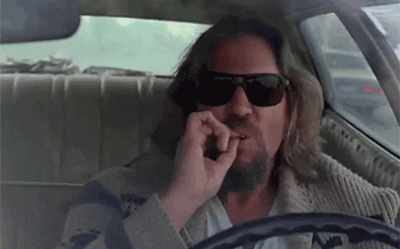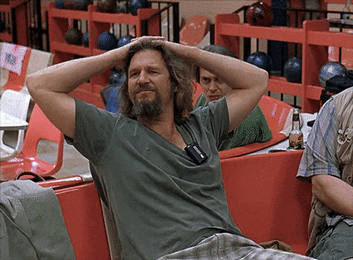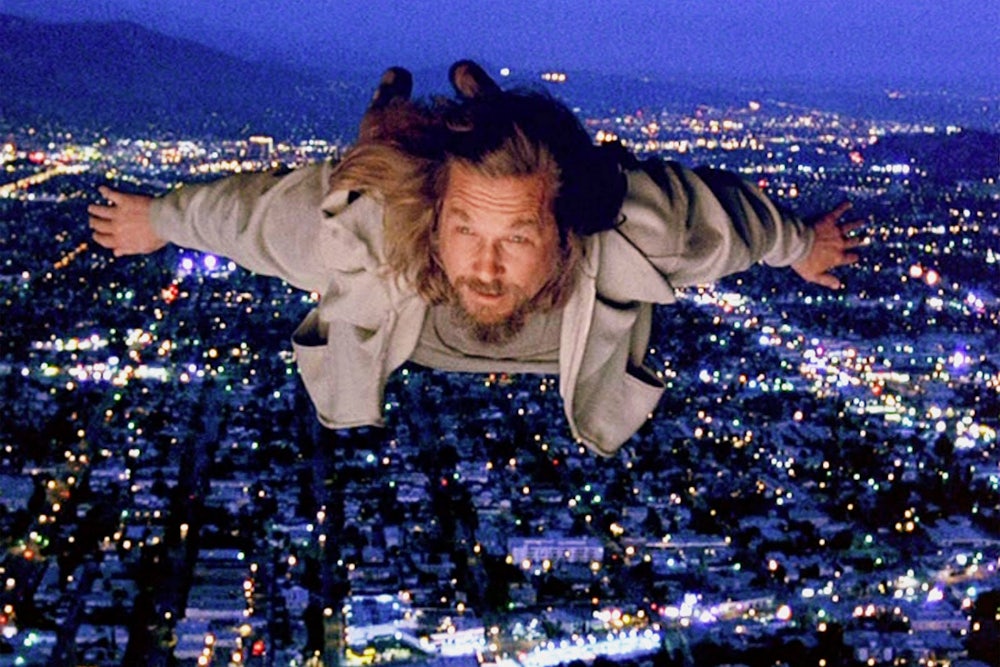Near the very end of the The Big Lebowski, the titular lead character, a disarmingly nonchalant stoner who goes by the nickname “the Dude” (Jeff Bridges), reveals his personal credo. “Yeah, man,” he mutters. “Well, you know, the Dude abides.” Released 20 years ago this week, the Coen brothers film doesn’t just abide; it has become a classic American comedy with an intense cult. The annual Lebowski Fest, where fans dress up as the characters, started in Louisville, Kentucky, in 2002 and has travelled to major cities like New York, San Francisco, and London. The internet is littered with memes featuring catchphrases from the movie, which often end in “man.” (As in, “This aggression will not stand, man.” And: “That’s just, like, your opinion, man.”)
The lasting popularity of The Big Lebowski would have surprised most film critics when it first came out. As David Denby wrote in The New Yorker in 2008, the film “received mediocre reviews and did little initial business.” One of the underwhelmed critics was Denby himself. “It’s only amusing the first time the Dude gets lost in his own story—a story so incoherent that he can’t explain it to anyone,” Denby snarled in 1998 in New York magazine. “What’s the point of scoring off morons who think they are cool? Jeff Bridges has so much dedication as an actor that he sacrifices himself to the Coen brothers’ self-defeating conception. Even Bridges can’t open up a character who remains unconscious.”
The shifting critical fortunes of The Big Lebowski are legendary. Roger Ebert initially gave the movie a mixed review because of its ramshackle plot, which “rushes in all directions and never ends up anywhere.” In 2010, he upgraded The Big Lebowski to the status of a “great” movie. Denby also changed his mind, according to a recent Washington Post survey of critics who initially panned the movie. Others either haven’t revisited it or are still put off by it. Daphne Merkin, in her original New Yorker review, said the movie was “drenched in knowingness” and lacked a “narrative structure.” She likes the movie slightly more now, but not by much. “I think it is a quintessential insider movie, one that plays in this shrewd way to groupthink,” Merkin told the Post. “You’re either in on it, or you’re not in on it.” But even Merkin allowed that “the dude and his disconnected dudeness has a certain appeal now, maybe because the world has grown more horrendous or reality is less bearable than when the film was made.”

The failure of many critics to appreciate The Big Lebowski when it came out illustrates some major blind spots that are common to film critics. The movie fuses a Raymond Chandler–style detective novel plot, about the supposed kidnapping of a rich man’s trophy wife, and a Cheech & Chong–style stoner comedy. Interspersed throughout are Busby Berkeleyesque musical numbers about the Dude’s imaginative inner life.
In short, The Big Lebowski is a very strange movie set in a highly stylized filmic universe: 1991 Los Angeles, as viewed through a haze of marijuana smoke and White Russians. The characters in the movie are not realistic but parodic or even grotesque: not just the Dude, with his Buddha-like calm that verges on complete disengagement, but also his manically aggressive bowling buddy Walter (John Goodman), the browbeating millionaire who shares the Dude’s birth name of Jeffrey Lebowski (David Huddleston), the runaway nympho Bunny Lebowski (Tara Reid), and fleeting roles that include a high-talking Heffner-esque pornographer and a feminist performance artist.

It’s easier to appraise a realistic movie, since everyone is qualified to judge verisimilitude—to compare the film’s world with one’s own. This is why using naturalism has become a default critical yardstick for reviewers, especially those on a tight deadline. Pauline Kael, perhaps the greatest of all American film critics, had very little time for deliberately stylized movies, which is why she panned most of Stanley Kubrick’s works after Dr. Strangelove. Kubrick, like the Coens, preferred to invent worlds rather than mimicking the real one. But by eschewing the conventions of naturalism in The Big Lebowski, the Coen brothers baffled or alienated many critics. Merkin’s 1998 review is a prime example. “The Coens can’t be bothered—or perhaps they don’t know how—to make a connection between what’s inside their smart-aleck heads and the plodding, sometimes painful world in which the rest of us live when we’re not at the movies,” she wrote.
The Coens make dark comedies that are tinged with the absurd and populated by exaggerated personalities with a tendency towards caricature. But some of their films are in a more realistic register, such as Fargo, No Country For Old Men, and True Grit. These are the ones that critics tend to champion and which compete for awards. But when the Coens move away from realism toward outlandish comedy, as in Burn After Reading and O Brother, Where Art Thou?, they’re met with a mixed reception. (The Big Lebowski was also hindered by having to follow up Fargo, the Coens most critically and commercially successful film at the time.)
To be fair, loopy, bug-eyed comedies are hard to pull off and naturally divisive, since their intent can be hard to read. That describes the Coen brothers films that are widely considered the least artistically successful: The Ladykillers, Intolerable Cruelty, and The Hudsucker Proxy. Weird films can also take time to absorb. Film director Rian Johnson described The Big Lebowski as a “grower,” a film that one appreciates only after watching it over and over again.
Generally I agree, but specifically I think Lebowski is a grower. I totally didn’t get it when I first saw it in the theater. Then I kept rewatching it.
— Rian Johnson (@rianjohnson) March 8, 2018
The Big Lebowski is a grower because the plot is less important than the characters. At the heart of the movie is the improbable friendship of the near-pacifist Dude and the violence-prone Walter. The zinging banter between the two characters is really a battle of philosophies. The Dude (one of the authors of the original Port Huron Statement, “not the compromised second draft”) embodies the spirit of the 1960s counterculture, weatherworn by the 1990s but still wily and subversive; Walter is a knee-jerk hawk, always escalating conflict, often with disastrous results. But to enjoy the movie you have to get to know the two characters and appreciate the nuances of their friendship, which is easier after multiple viewings. The dialogue also becomes richer, as you notice how the characters have distinctive lingos which the Dude, with his sponge mind, absorbs and echoes.
The Big Lebowski is a masterpiece of world-building, but to enjoy it you have to be willing to enter its world on its own terms. Few were willing to do that in 1998. But today, thanks in part to the Coen brothers’ oeuvre, it doesn’t seem so strange anymore.
